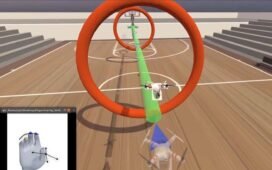
Mapping tumours and the genetic changes within them could help develop new cancer treatments
Sipa Press/Alamy
We now have some of the most detailed maps ever made of several cancers, along with new tools and methods for analysing them. The findings come from an initiative to map cancers called the Human Tumor Atlas Network, and provide clues about how cancers form, evolve and become resistant to treatment.
Cancer develops when genetic mutations spur cells to grow and proliferate uncontrollably. Much of what we know about the disease comes from genetically analysing tumours. Until recently, we could only do this by combining and analysing all the genetic data in a tumour sample at once, making it impossible to identify individual cell types.
But tumours aren’t monolithic. “They’re complex, like ecosystems that consist of not just tumour cells, but also immune cells, endothelial cells and other support cells,” says Daniel Abravanel at the Dana-Farber Cancer Institute in Boston.
Thanks to the advent of more sophisticated tools, a team of researchers has now been able to identify individual cells or determine their functions in tumours from nearly 2000 people with 20 different kinds of cancer.
As part of the work, Li Ding at Washington University in St. Louis, Missouri, and her colleagues mapped 131 tumour regions from 78 people with cancer types that show up in the breasts, colon, pancreas, kidneys, uterus and the bile ducts that connect the liver and gall bladder to the small intestine. They used a technique called single-cell sequencing to measure which genes were turned on or off in each cell of a tumour sample.
The researchers also viewed tissue samples under powerful microscopes to determine the location and structure of cells. Next, they built 3D models of tumours, showing how cells within them are organised and interact. They found that, within tumours, cancer cells form distinct clusters known as microregions. The researchers then grouped these areas based on similar genetic alterations, such as high or low immune cell activity. Evolution within the genetic activity of cells in microregions appears to be a major factor in cancers becoming resistant to treatments.
Further research from the Human Tumor Atlas Network suggests that multiple cells can sometimes coordinate to form colon cancer. “For decades, the consensus in the field has been that a tumour originates from a single cell,” says Doug Winton at the University of Cambridge.
Winton and his colleagues used mice that were genetically engineered so their cells changed colour when they became cancerous. This made it possible to identify and track tumours as they formed in the guts of the animals. The researchers found that about 40 per cent of colon tumours originated from multiple cells, which cooperated to outcompete neighbouring cells.
A separate group of researchers led by Ken Lau at Vanderbilt University in Tennessee also identified biomarkers for monitoring tumour evolution. Naturally occurring mutations create permanent genetic changes in tissue, which allowed the researchers to reconstruct the sequence of events, creating a molecular timeline of each tumour’s growth.
Using this approach, they analysed early precursors of colon cancer in mice and people and found that up to 30 per cent had a multicellular origin. The best predictor we currently have for determining whether a precancerous lesion in the colon will become cancerous is its size, says Lau. Understanding how colon cancer forms can improve our ability to screen precancerous lesions and detect cancer earlier, he says.
The cancer mapping project uncovered some surprises. Abravanel and his colleagues collected 67 tumour biopsies from 60 people with metastatic breast cancer, meaning it had spread to other organs, such as the liver, brain and lungs. They found that samples collected from the same participant at different time points were genetically very similar. “You would expect to see different mutations evolve over time,” says Abravanel.
As part of the project, researchers led by Ben Raphael at Princeton University created an algorithm that quantifies the proportion of cancerous and non-cancerous cells in a tumour and investigates how these cells interact, which can also help discern how a tumour is growing.
Together, these discoveries bring us a step closer to understanding how cancer forms and evolves, which, in turn, could improve treatment. Abravanel says this could help in his clinical practice as well: “We try as best we can to match the right treatment to the right patient, but largely we aren’t able to, for individual cases, pull out what the best therapy would be at that moment in time.”
Topics:








